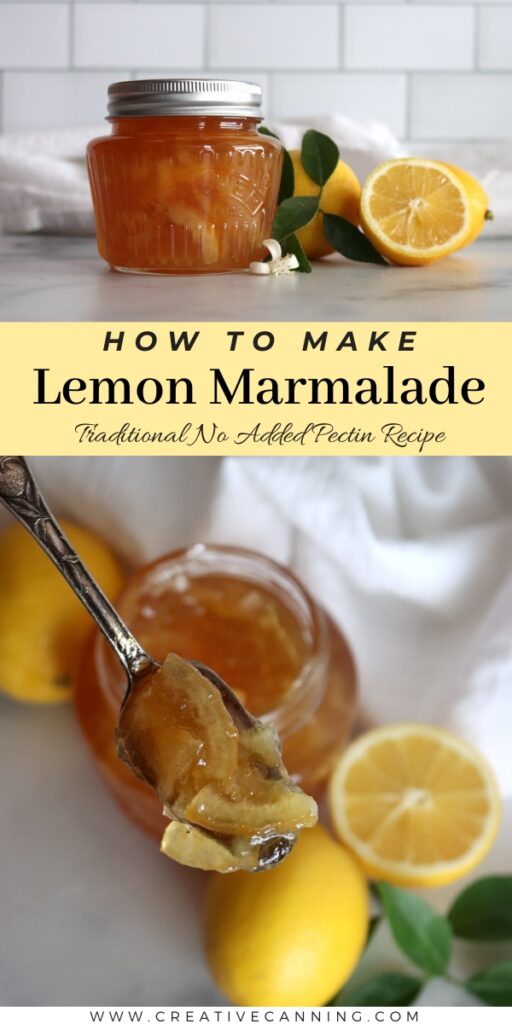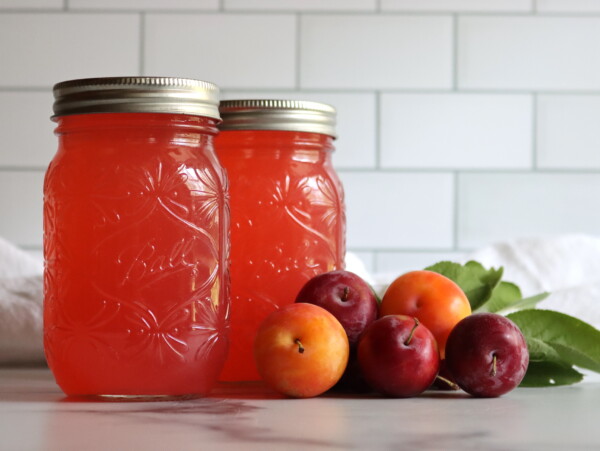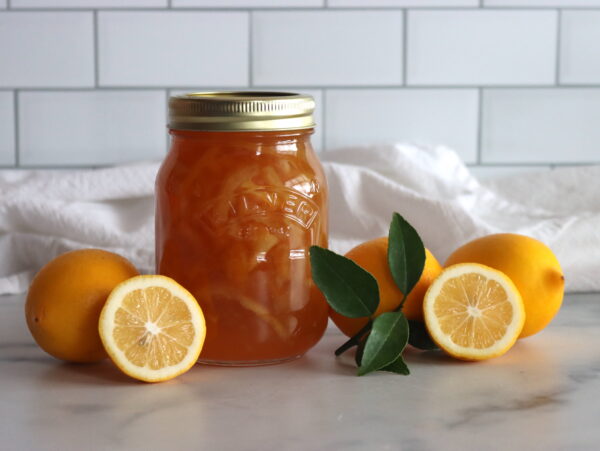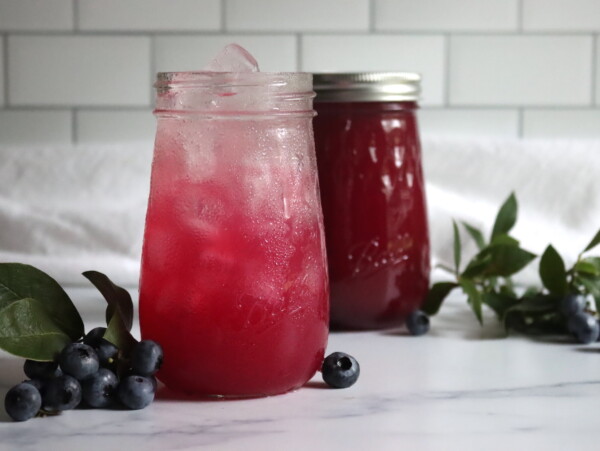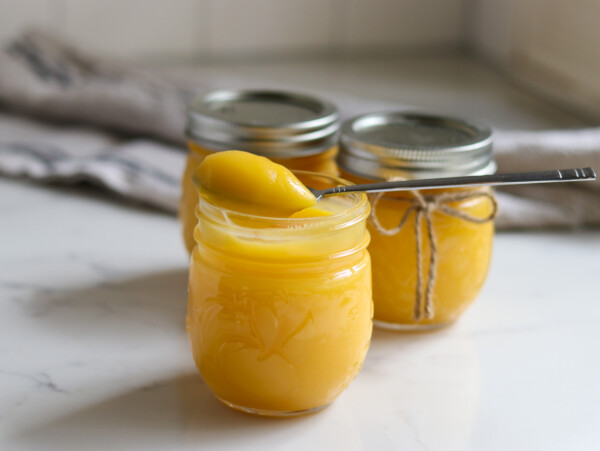This post may contain affiliate links. Please see our disclosure policy.
Lemon marmalade has the perfect balance of tangy lemon and sugar, and the peel adds enough texture to keep things interesting.
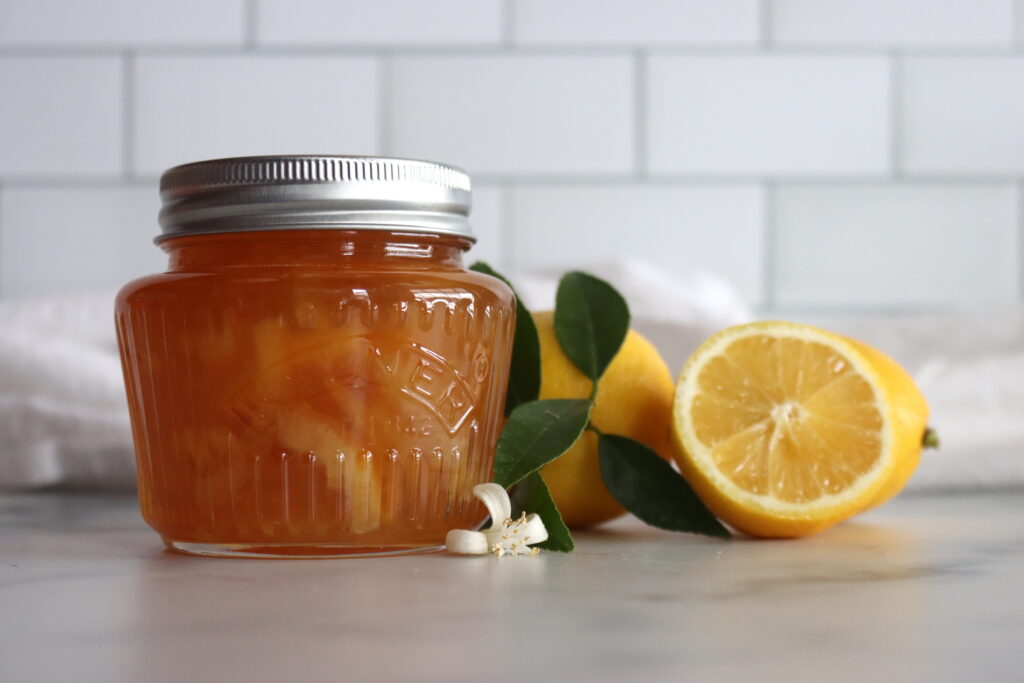
Table of Contents
Lemon marmalade is a delightful way to preserve the bright, tangy flavor of fresh lemons. With its perfect balance of sweetness and tartness, this classic marmalade is a perfect on toast or biscuits, but it also works well when used as an ingredient in marinades or salad dressings (or anywhere else you want concentrated lemon flavor).
This recipe follows a traditional three-day method to develop the best flavor and texture, ensuring a beautifully set marmalade with a rich citrus taste.
Lemons are one of the best fruits for making marmalade due to their naturally high pectin content, which helps create the perfect gel-like consistency. Their tartness balances well with sugar, resulting in a preserve that is bright, flavorful, and slightly bitter. Unlike other citrus marmalades, lemon marmalade has a uniquely refreshing sharpness that makes it stand out.
By using a multi-day process, you allow the flavors to deepen while reducing bitterness, leading to a delicious, well-rounded preserve.
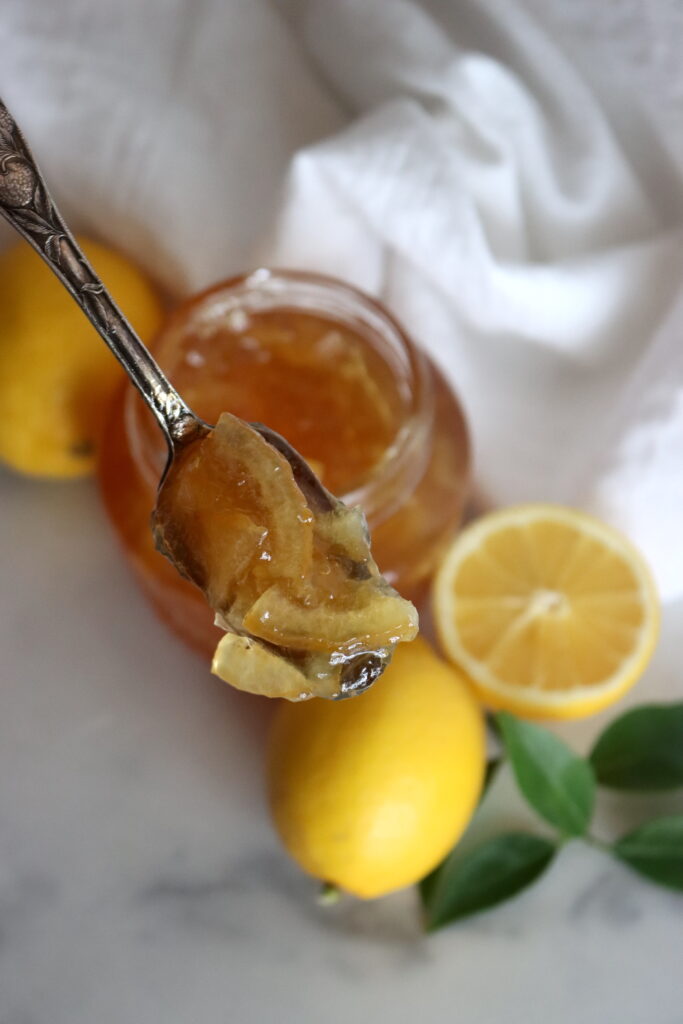
Ingredients for Lemon Marmalade
To make approximately ten 8-ounce jars of lemon marmalade, you’ll need:
- 2 lbs lemons (preferably Lisbon), cut into eighths
- 2 lbs seeded lemons, cut into eighths and sliced thinly, seeds removed
- 4 lbs white cane sugar
- 1 to 2 extra lemons for 2 ounces of freshly squeezed lemon juice
This is a big recipe, and you can cut it half to make a smaller 5 jar batch.
The lemons are divided into two groups, and they’re cut differently and cooked separately. The first group is just made into lemon jelly, so you can cut them coarly and leave the seeds in. They’ll all be strained out.
The second finely sliced group will end up in the marmalade, so pay careful attention there to cut evenly and remove seeds.
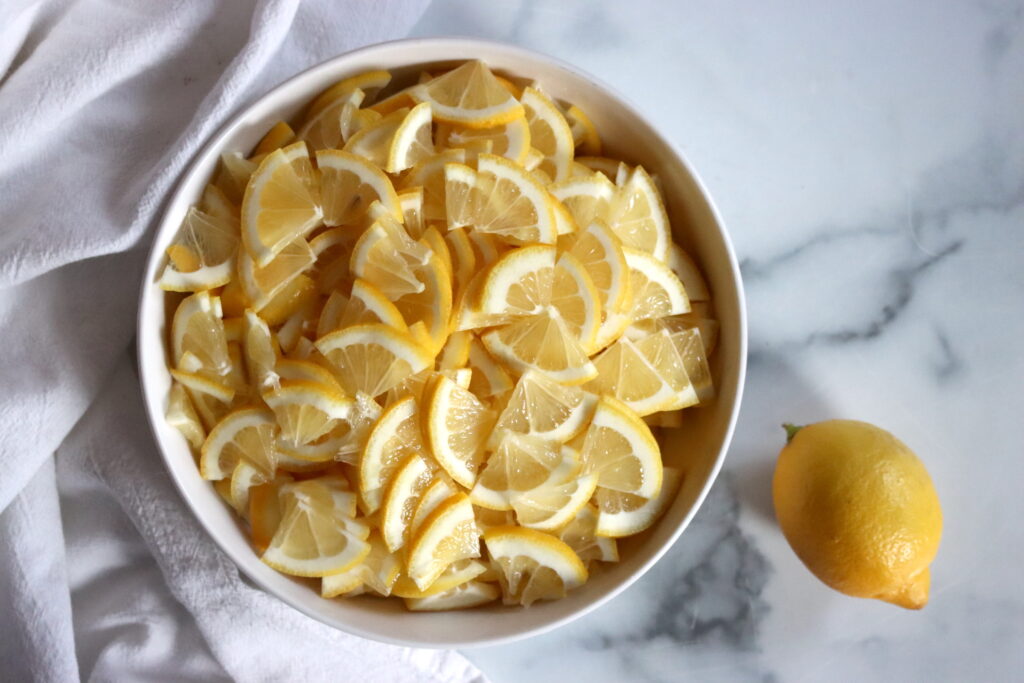
This is a traditional marmalade, and there’s quite a bit of sugar added. It needs that sugar to set, but also to balance the tart lemon. If you want to use less sugar, you’ll need to add boxed pectin to get a set.
I have a low-sugar orange marmalade recipe with pectin, and you can use lemons in place of oranges in that recipe if you want to lower the sugar.
Making the Marmalade
I’ve broken the process up by day. You can actually make this in 2 days if you’d like, as the lemon jelly portion is strained overnight but you can just strain it for 1-2 hours if you’d like to cut a day off the process. In that case, make sure you prep the lemon slices on day 1 so that everything will be ready on day 2 instead of day 3.
Day 1
Place the lemon eighths in a nonreactive saucepan where they will fit snugly in a single layer. Add enough cold water to allow the fruit to float freely. Cover the pot tightly and let it rest overnight at room temperature.
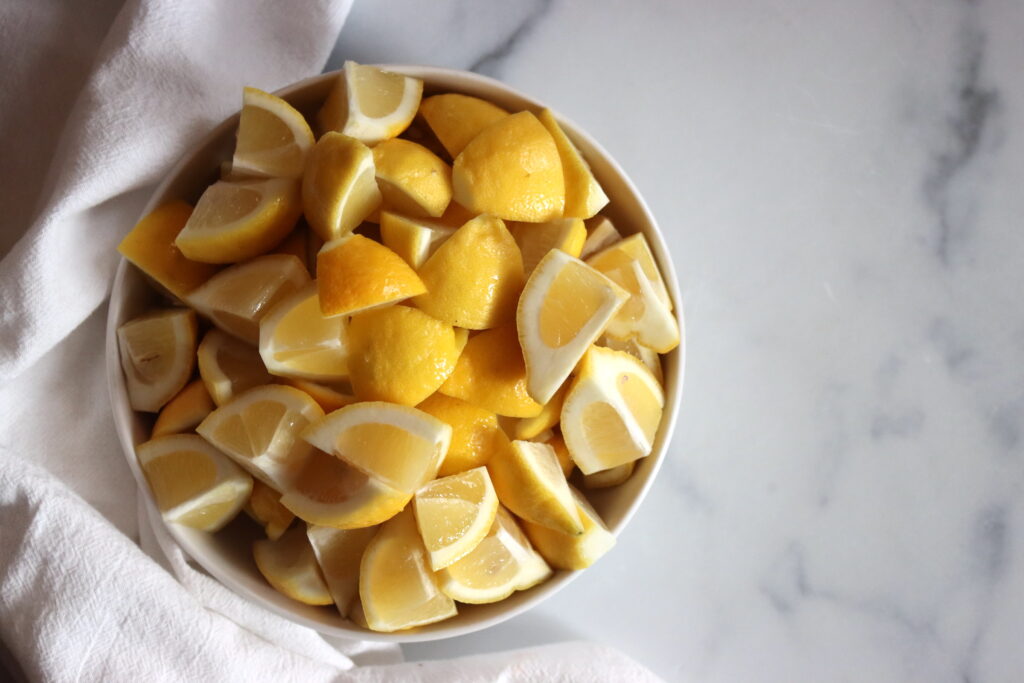
Day 2
Prepare the cooked lemon juice by bringing the pan with the lemon eighths to a boil over high heat. Reduce the heat to medium and cook the fruit at a lively simmer, covered, for 2 to 3 hours, or until the lemons are very soft and the liquid becomes slightly syrupy. As the lemons cook, press down on them gently every 30 minutes, adding a little more water if necessary to keep the fruit submerged.
Once the lemons are finished cooking, strain their juice by pouring the hot fruit and liquid into a medium strainer or colander over a nonreactive saucepan. Cover the setup with plastic wrap and let it drain overnight at room temperature. (You should end up with about 4 cups of strained liquid.)

Meanwhile, prepare the sliced lemons by placing them in a wide stainless-steel kettle and covering them with cold water. Bring to a boil over high heat, then reduce the heat and simmer for 5 minutes. Drain and discard the liquid.
Return the slices to the kettle, cover with 1 inch of cold water, bring to a boil again, then simmer for 30 to 40 minutes, or until the fruit is very tender. Stir every 15 minutes, adding water if necessary to keep the fruit submerged. Remove from heat, cover tightly, and let rest overnight at room temperature.
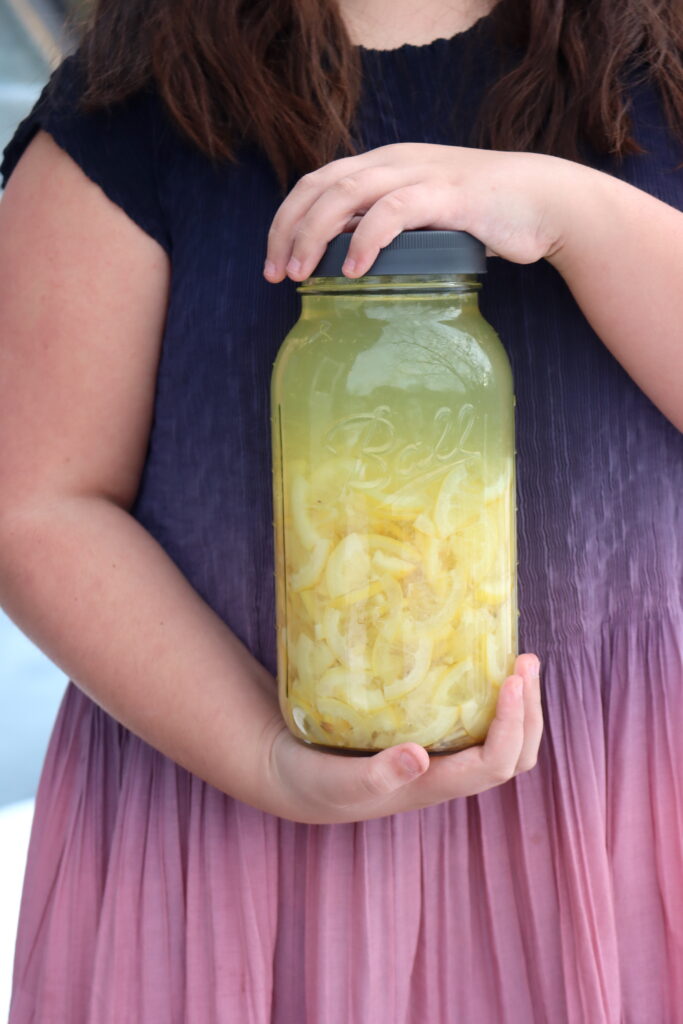
Day 3
Place a saucer with five metal teaspoons in the freezer for testing the marmalade later.
Remove the plastic wrap from the lemon juice and strain it through a very fine-mesh sieve to remove any lingering solids. In a large mixing bowl, combine the sugar, cooked lemon juice, fresh lemon juice, and the sliced lemons with their liquid. Stir well and transfer the mixture to an 11- or 12-quart preserving pan.
Bring the mixture to a boil over high heat. Cook at a rapid boil until the marmalade reaches its setting point—this will take a minimum of 25 minutes but may vary. Initially, the mixture will bubble gently, then foam as moisture evaporates and sugar concentration increases. Do not stir during the bubbling stage. Once foaming begins, stir gently every few minutes with a heatproof rubber spatula. As the mixture nears completion, stir slowly every minute or two to prevent burning.
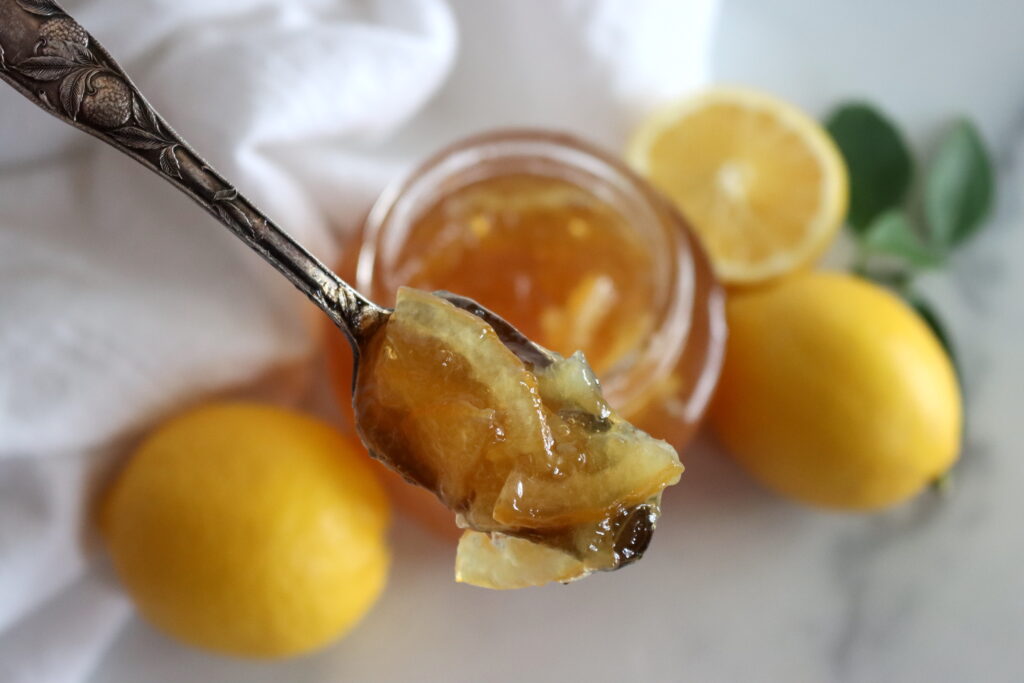
Testing for Set
There are several methods to determine if your marmalade has reached the perfect consistency:
Instant Read Thermometer
If you have an instant-read thermometer, you can check for doneness by temperature. Marmalade typically sets at around 220°F at sea level or about 8°F above the boiling point of water. Since the boiling point of water decreases with altitude, the set point drops by 1°F for every 500 feet above sea level. For instance, at 1,000 feet elevation, the set point would be 218°F.
Cold Plate Test
To use the cold plate method, place a few small plates or saucers in the freezer ahead of time. When you’re ready to test, drop a small spoonful of marmalade onto a chilled plate and let it sit for a few seconds. Run your finger through the marmalade; if it wrinkles and holds its shape without running back together, it is set. If not, continue cooking and test again every few minutes.
Cold Spoon Test
For this test, place several metal teaspoons in the freezer. When ready, remove a small spoonful of marmalade and place it on one of the frozen spoons. Allow it to sit for 1–2 minutes. Check the underside of the spoon—it should be neither warm nor cold. Tilt the spoon; if the marmalade holds its shape and has thickened to a jelly-like consistency, it is done. If it still runs, continue boiling for a few more minutes and retest as needed.
Once the marmalade is finished, turn off the heat, but do not stir. Skim off any foam with a stainless-steel spoon and discard. Pour the marmalade into prepared jars, leaving 1/4-inch headspace.
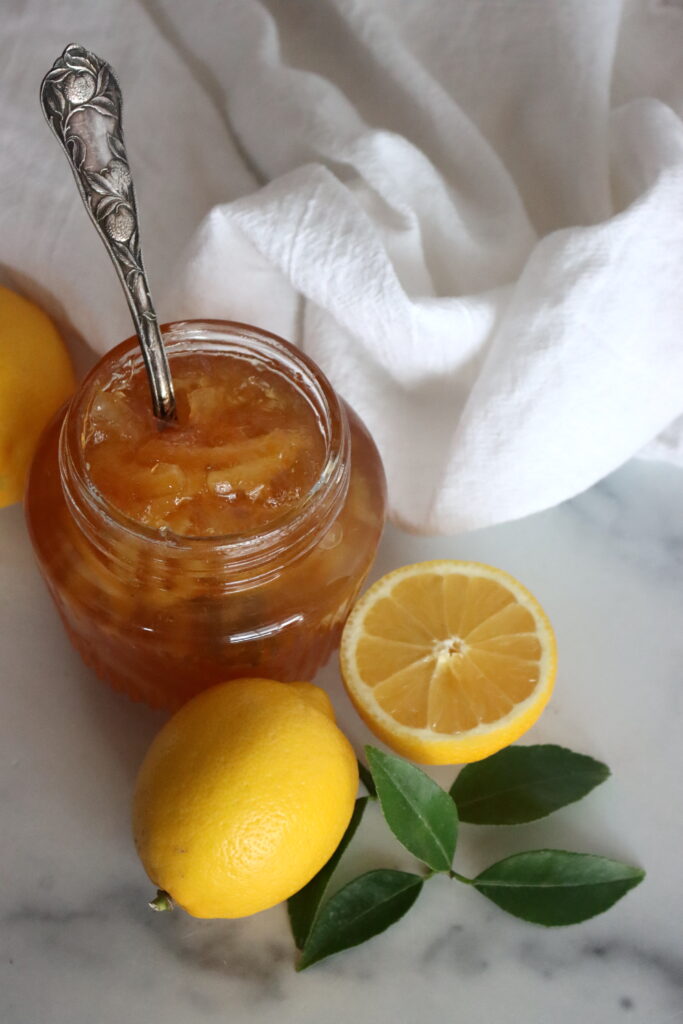
Canning Lemon Marmalade
Canning is optional, but if canning, prepare a waterbath canner and jars before you begin cooking the marmalade on the final day.
Fill the jars, leaving ¼ inch headspace and cap with canning lids. Process the jars in a waterbath canner for 10 minutes, or 15 minutes if above 6,000 feet in elevation.
Remove the jars from the canner and allow them to cool to room temperature before checking seals. Store any unsealed jars in the refrigerator for immediate use.
Properly canned and sealed jars of orange marmalade will maintain peak quality on the pantry shelf for 12-18 months.
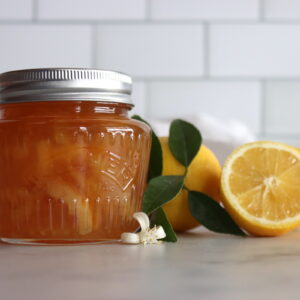
Lemon Marmalade
Ingredients
- 2 lbs lemons, Preferably Lisbon, cut into eighths
- 2 lbs lemons, Cut into eighths and sliced thinly, seeds removed
- 4 lbs sugar, about 8 cups, white cane sugar
- 1/4 cup lemon juice, freshly squeezed, from 1 to 2 extra lemons beyond those used above
Instructions
Day 1:
- Place lemon eighths in a nonreactive saucepan in a single layer.
- Add cold water until fruit floats freely, cover, and let rest overnight at room temperature.
Day 2:
- Bring the lemon eighths to a boil over high heat, then reduce to a simmer.
- Cook covered for 2-3 hours, pressing fruit occasionally, until very soft and slightly syrupy.
- Strain hot fruit and liquid through a colander into a nonreactive saucepan, cover with plastic wrap, and let drip overnight.
- Prepare the sliced lemons by boiling them in water for 5 minutes, then draining.
- Cover slices again with 1 inch of water, boil, then simmer for 30-40 minutes until tender.
- Remove from heat, cover, and let rest overnight at room temperature.
Day 3:
- Place a saucer with five metal teaspoons in the freezer.
- Strain the lemon juice through a fine-mesh sieve.
- In a large bowl, mix sugar, lemon juice, and sliced lemons with liquid, then transfer to a preserving pan.
- Bring to a rapid boil over high heat and cook until setting point is reached (about 25 minutes).
- Test doneness using the frozen spoon test.
- Once done, skim off foam and pour into sterilized jars, leaving 1/4-inch headspace.
- Wipe rims, apply lids and bands, and process in a boiling water canner for 10 minutes (or 15 minutes if above 6,000 feet in elevation).
- Let jars cool for 12-24 hours before storing.
Nutrition
Nutrition information is automatically calculated, so should only be used as an approximation.
Marmalade Recipes
Once you’ve perfected this recipe, why not branch out to other citrus varieties?
Try the delicate sweetness of Meyer Lemon Marmalade or the bold flavors of Grapefruit Marmalade. For a low-sugar option, our Low Sugar Orange Marmalade (with pectin) is a great choice. If you’re feeling adventurous, give Kumquat Marmalade a go – it’s a unique way to preserve these tiny fruits.
Remember, you can always experiment with our Marmalade with Any Citrus recipe for endless flavor combinations!
